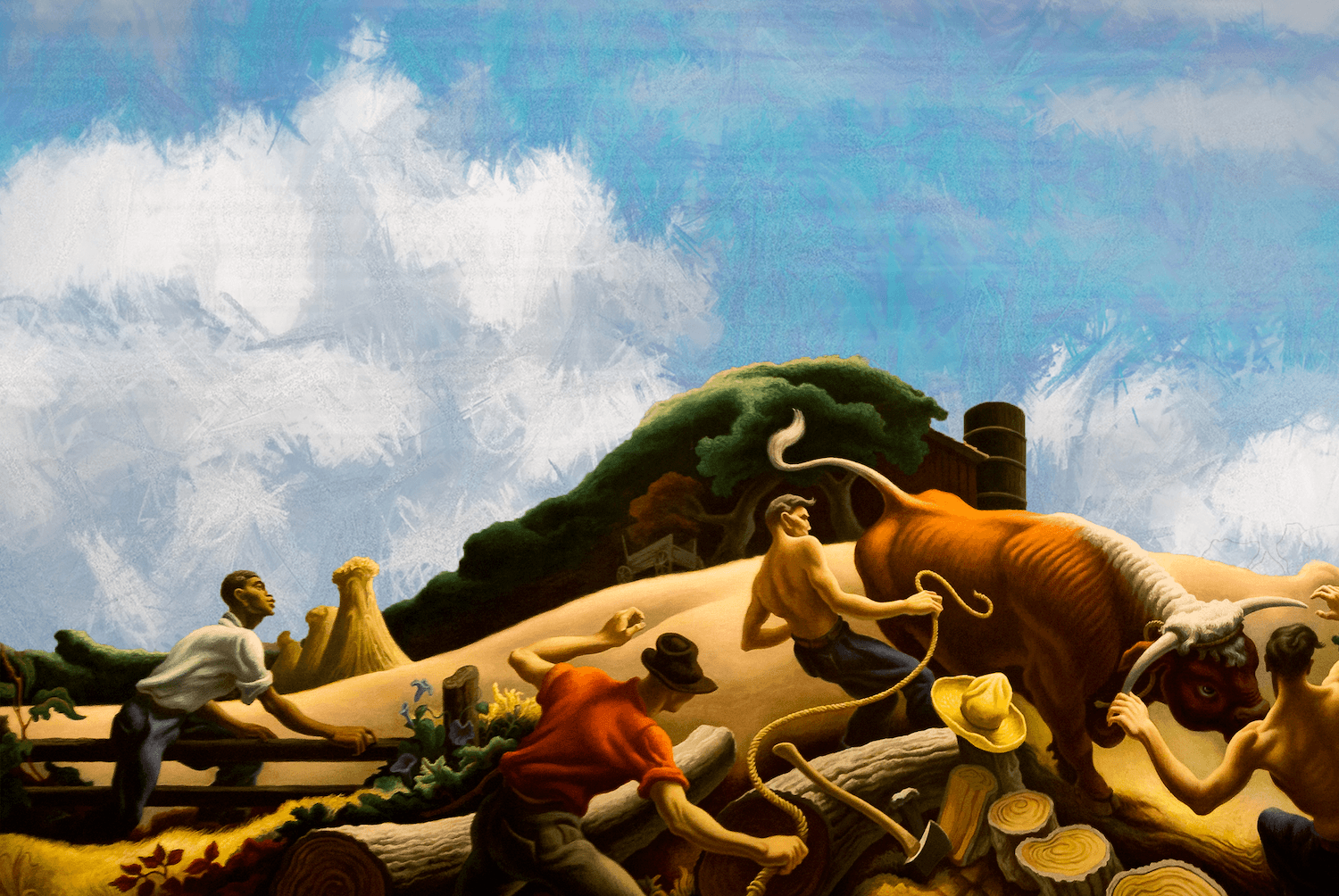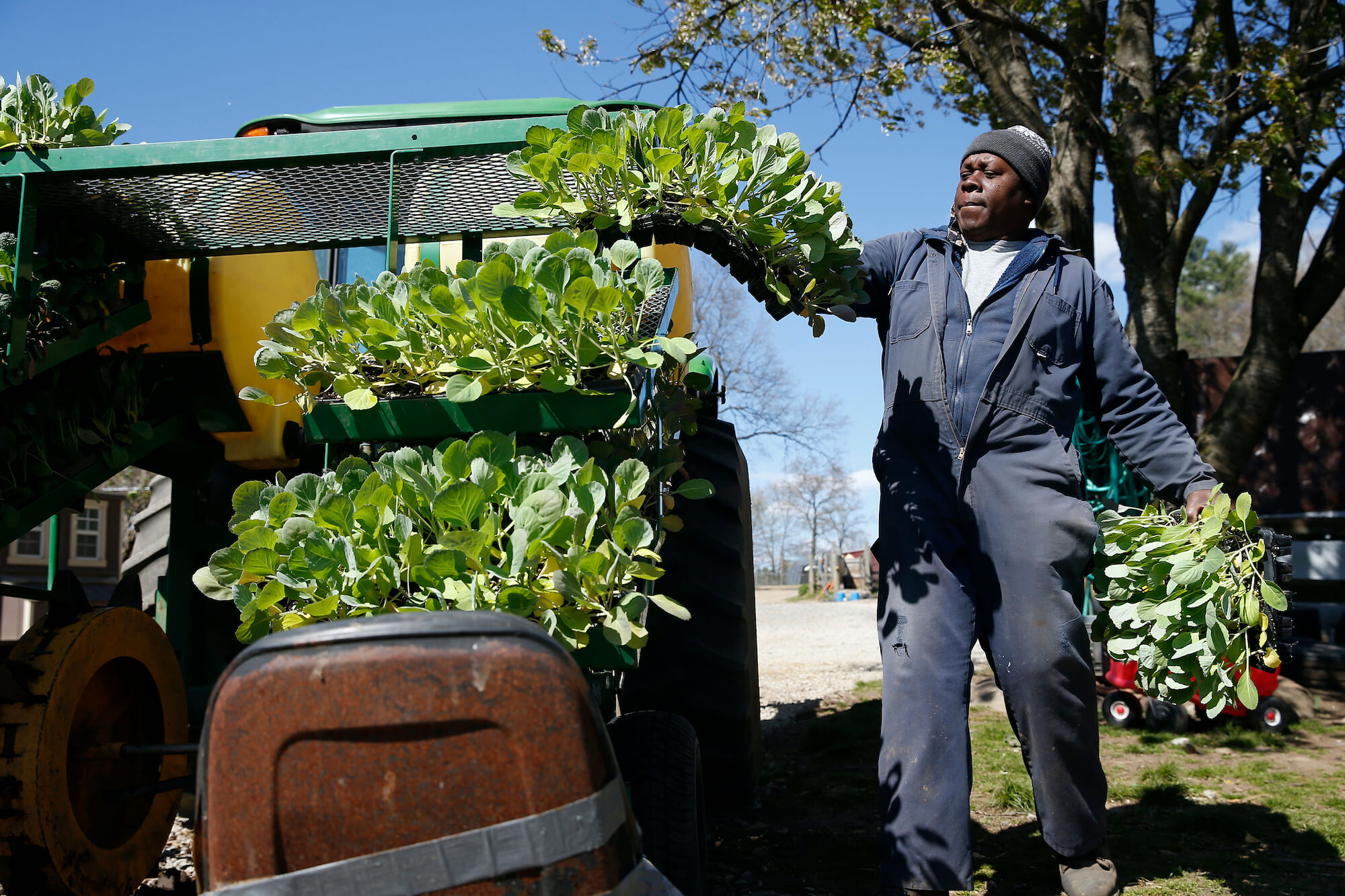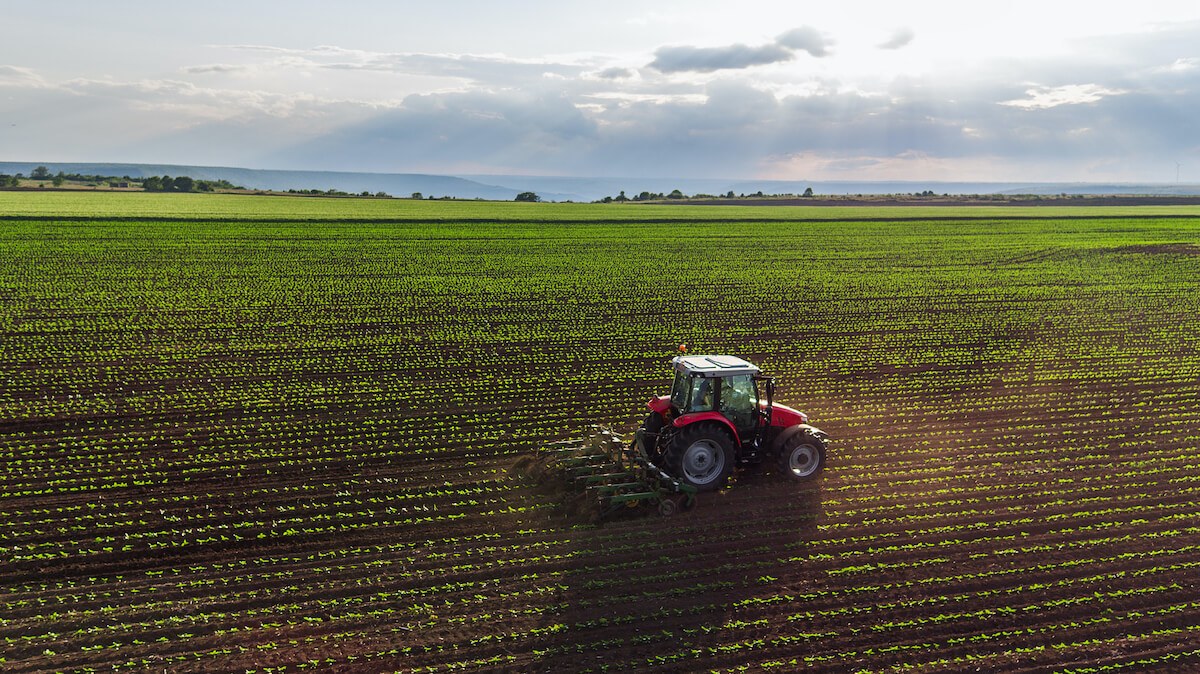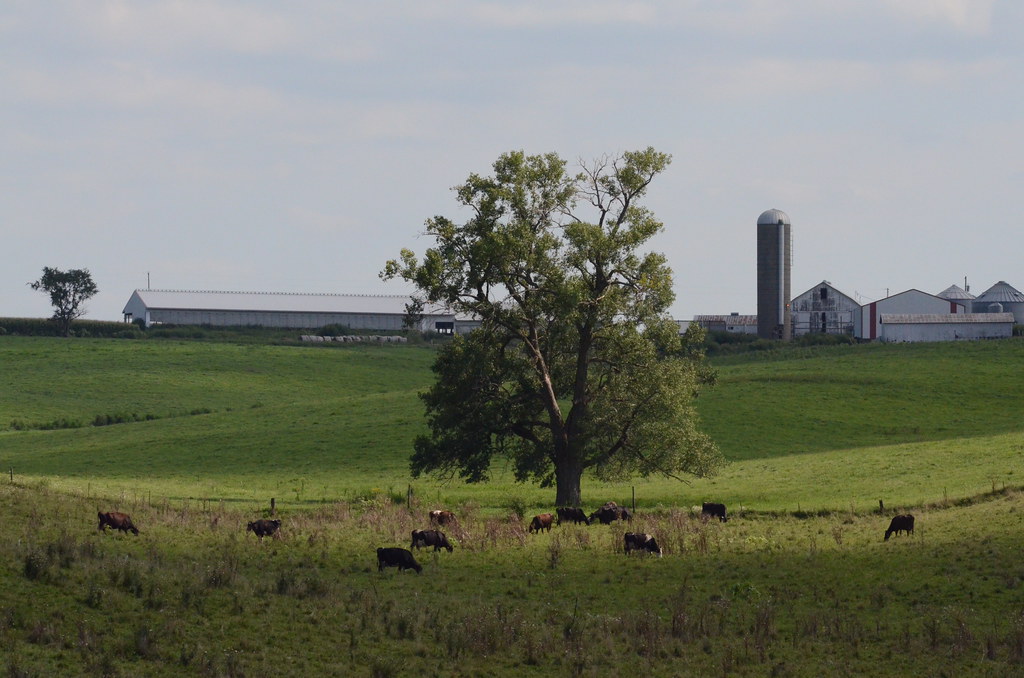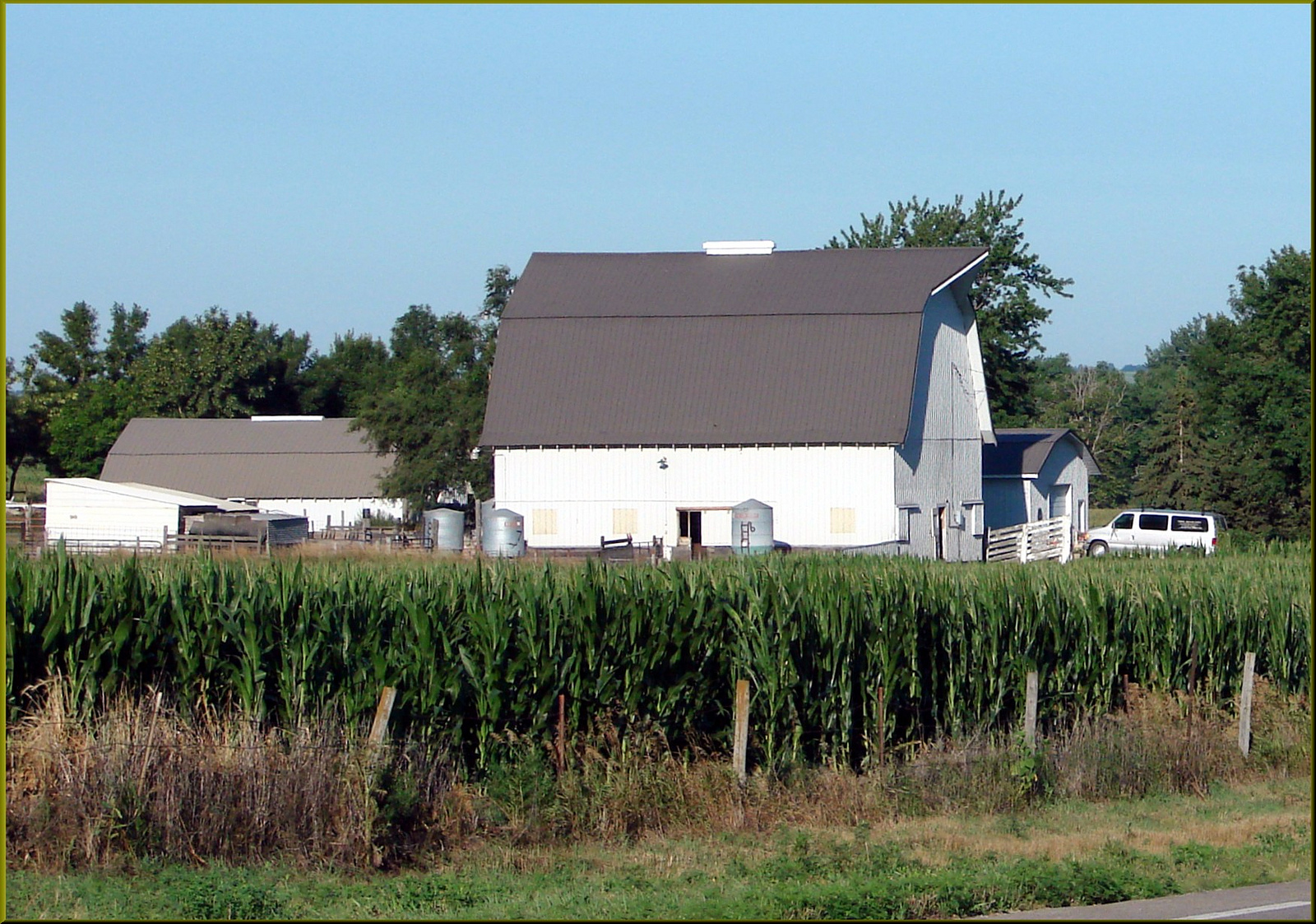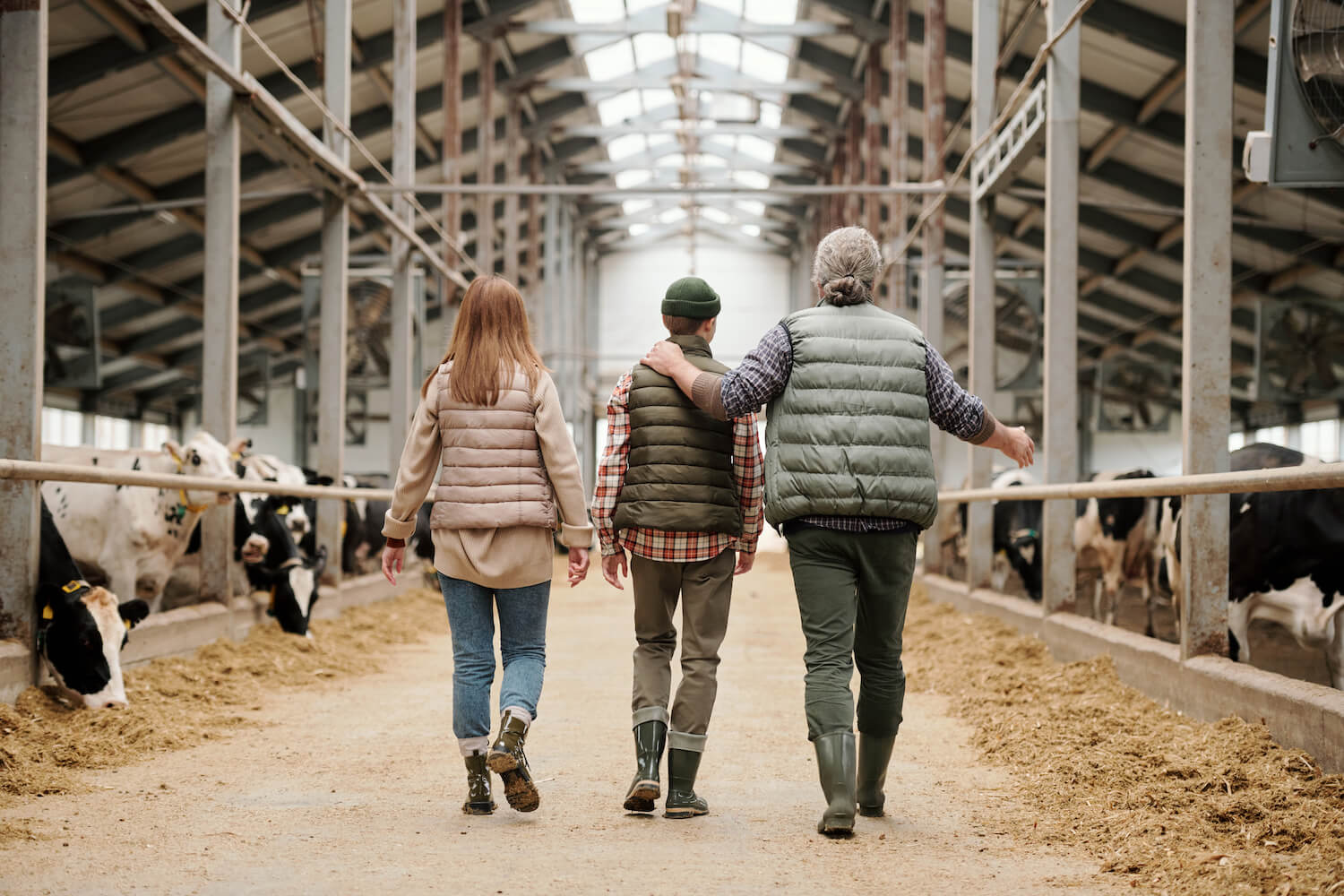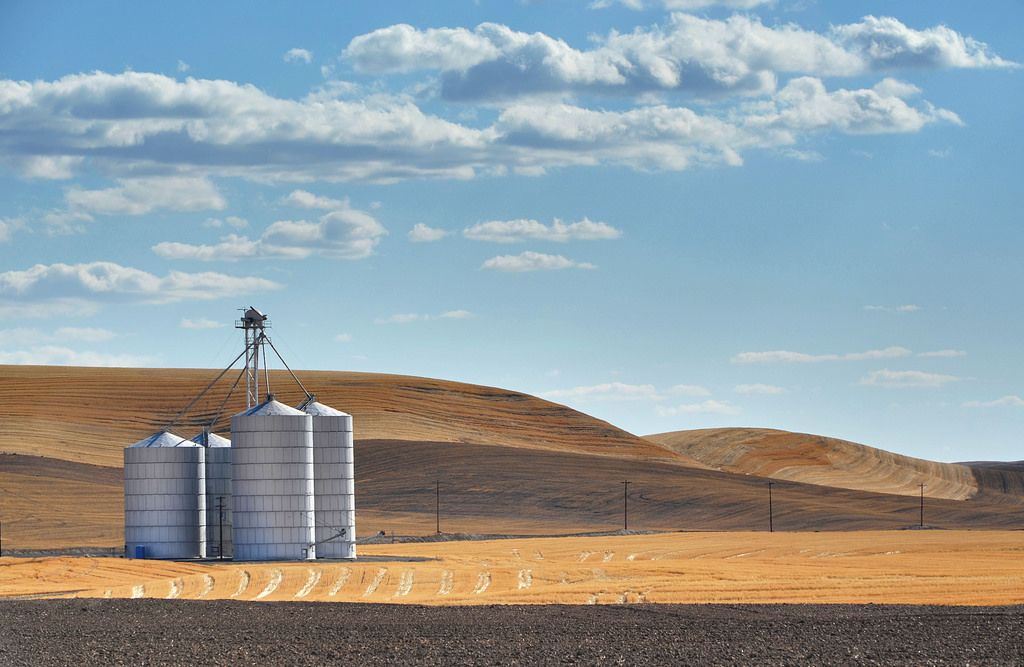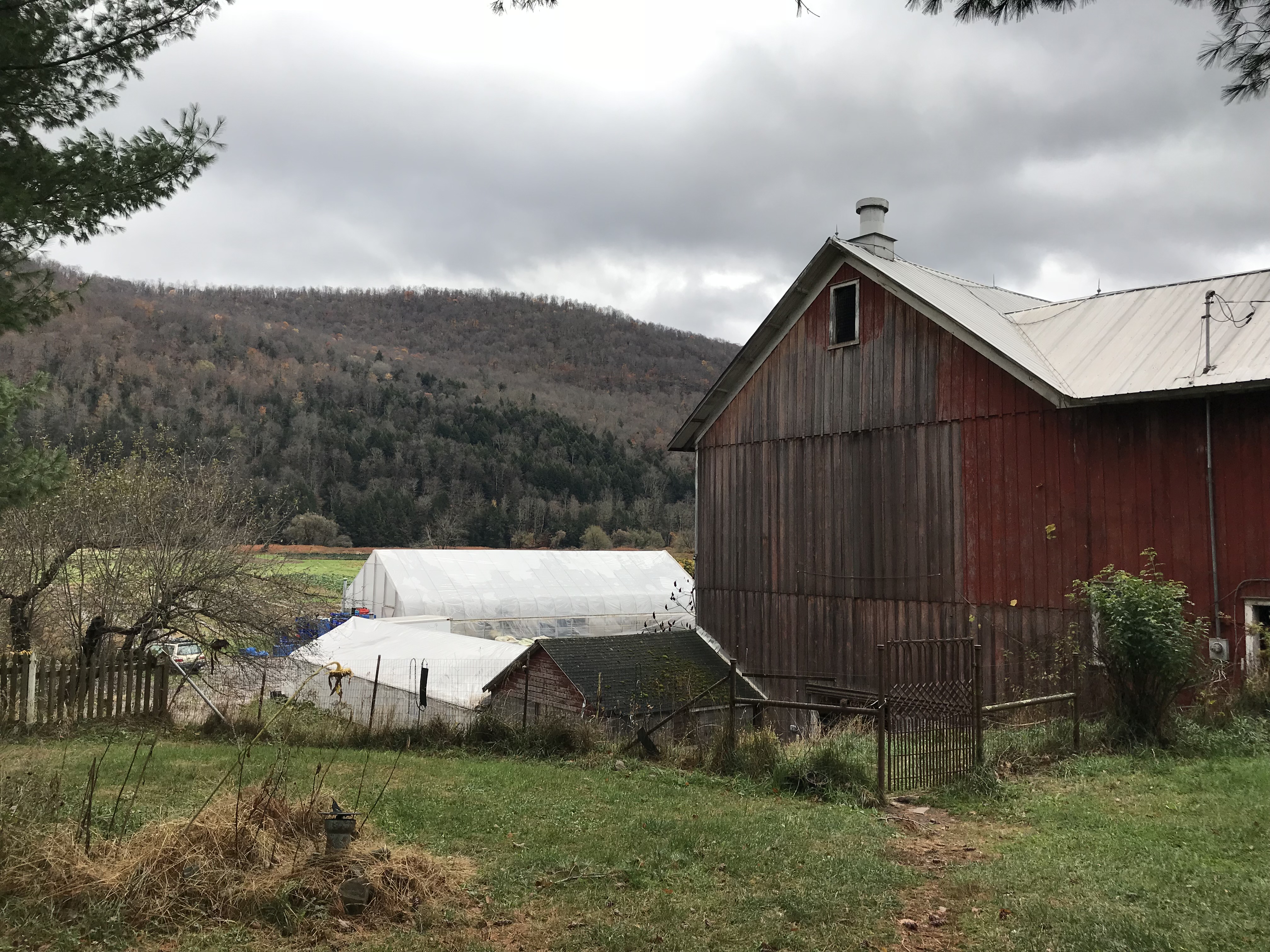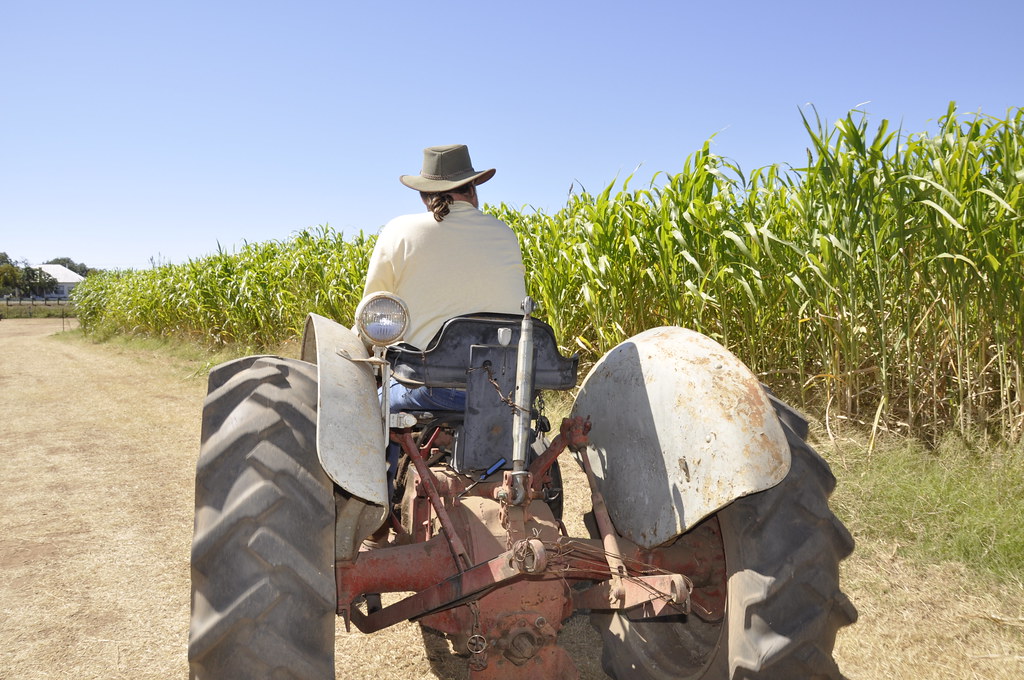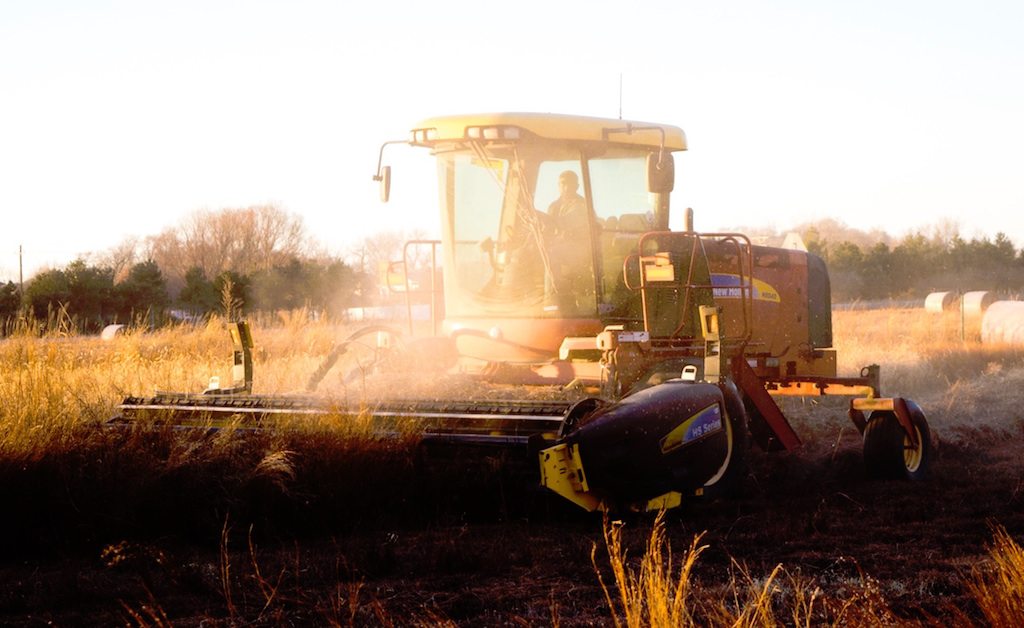The myth of the noble, independent grower keeps this nation from acknowledging that farming is simply a profession—and small farmers pay the price.
In the media, the small family farm has been on the brink of disaster since time immemorial. The story is an easy win—in part, because there’s no need to explain why it’s important.
Pictured above: Thomas Hart Benton’s mural, Achelous and Hercules over a painted cloudy blue sky.
In fact, in 2016, I landed a book deal on the topic, promising to explore why small family farms were at risk and what could be done to protect them.
Having grown up on a small family farm myself, I was certain that they were not only the future of our food system, but also the best and most virtuous way to organize agriculture. It’s right there in the name. “Small” means humble, locally connected, intimate with the natural and human community and their needs. At the same time, the small farmer is satisfied with their farm’s scale, not greedy for more but simply content with their share of honest reward for honest work. “Family” means caring, far-seeing, and willing to consider not just profits, but people. It also signals stubborn independence and self-reliance. Today, “small” and “family” are potent antidotes to “corporate,” “industrial,” and “factory,” all those evils of commerce that in our guts we believe should be kept far away from our land, water, air, animals, and food.
If the small family farm was the future, why were so many people unable to build one that worked?
Growing up in rural Wyoming, I thought of farming as quaint and pastoral, but not a job fit for the 21st century. But as foodie culture and the sustainable farming movements bloomed, suddenly having a background in agriculture didn’t make a person “backwards” or a “hick.” It was cool, even edgy. In a world dominated by technology, farming and food offer work that’s tangible, real, and comprehensible. When I decided during college to reconnect with my agricultural roots, I was just one of a vast cohort, eager to be part of the new-old world of farming.
When I started writing about agriculture, I was confident that the most important stories would help flesh out the plan for the small family farm’s future, find the farmers who were making it work, and highlight their narratives, to spread the movement.
In the course of my reporting, I’ve met a lot of farmers who fit this mold: passionate work-junkies positively obsessed with food, community, climate, and social change. But the longer I’ve watched, I’ve seen more and more of these farms struggle, pull back, and disappear.
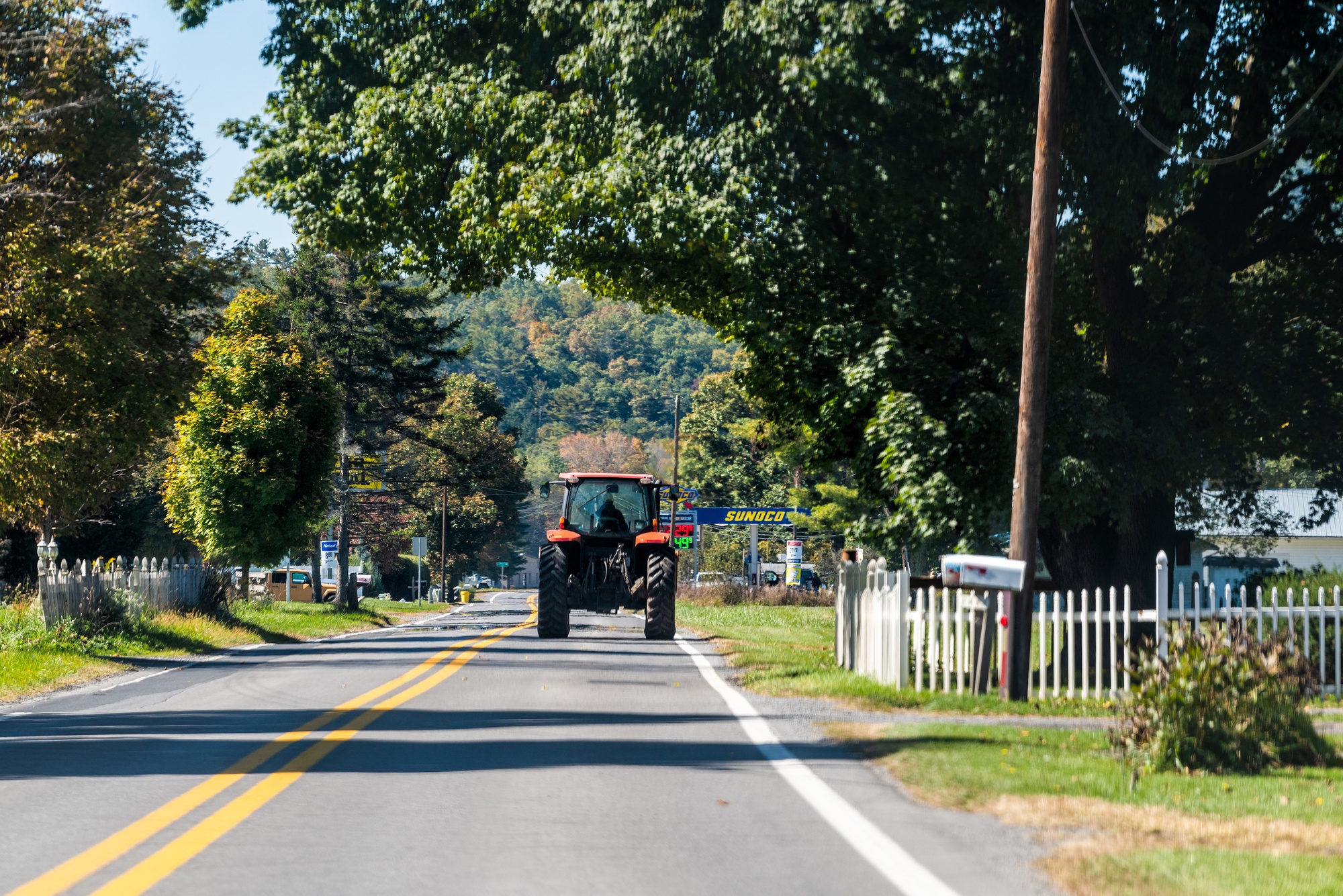
In the United States, small family farms are touted as the ideal, but frequently struggle to survive. In 2016, author Sarah Mock landed a book deal on the topic, promising to explore why small family farms were at risk and what could be done to protect them.
Kristina Blokhin/iStock
To me, this was the paradox of our agricultural generation. The cliché about the farmer who loses the family place after too many lean years is not supposed to be part of the new, young farmer story. Farmers are supposed to sell food to conscious consumers who pay a premium for CSAs and at farmers markets. They’re supposed to have access to U.S. Department of Agriculture (USDA) programs, grants, and GoFundMe money. And they’re supposed to take such good care of the land that the land takes care of them.
The level of interest among young people in farming in recent years seemed to indicate that the new model was all figured out. But when I looked closely at the community of new farmers over time, it became clear that beyond the professional speaking circuit, many or even most new farmers were failing in the same way their predecessors had.
Having grown up on a family farm myself, I was loath to rob my own story of its agrarian halo.
That was the question I wanted to tackle: If the small family farm was the future, why were so many people unable to build one that worked? Especially when, on the older, more conservative, and conventional side of the industry, farmers were not only preserving and building multigenerational farms, they were living quite comfortably while doing so.
There must be something, I concluded, that these established farmers could teach the newbies. There must be some secret that could blend the financial stability of bigger, more expansion-oriented farms with the climate and community focus of the smaller upstarts. With one foot in both worlds, I imagined that I might be able to uncover that secret.
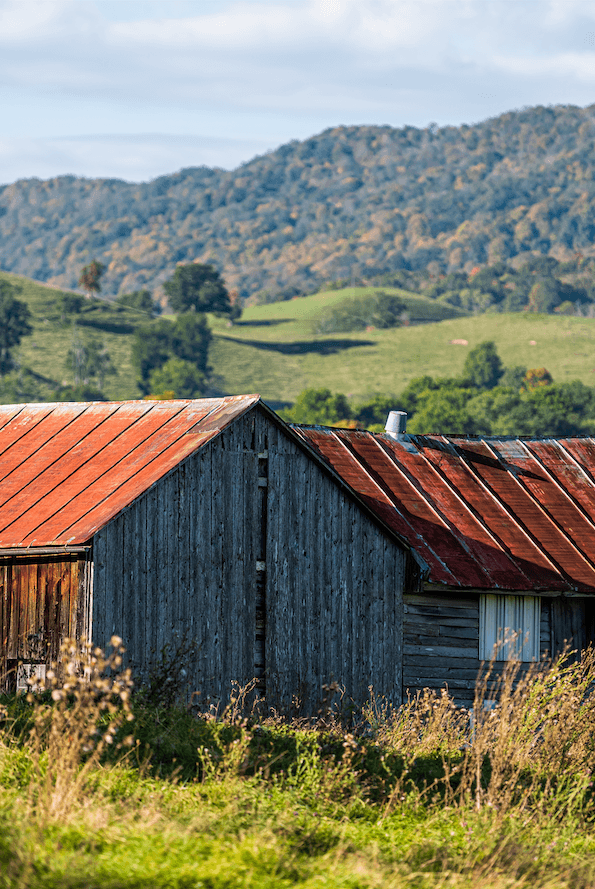
Kristina Blokhin/iStock
As Mock visited small family farms nationwide, success stories were few and far between. And she found those stories often depended on inherited wealth and profit-driven models that we don’t associate with the humble homestead of American myth.
With my freshly signed book contract in hand, I dove head-first into answering the question that so many small farms I knew never figured out: How does a farm achieve financial stability?
I set out on a quest to study as many farms as I could. I got to know a 16th-generation conventional grain farmer in Virginia, a third-generation citrus grower in the Southwest, and a diversified produce grower-turned-cider distiller in Minnesota, just to name a few.
Each of these farms was financially stable in their own way. But at the same time, none of them looked or acted the way the ideal small family farm is supposed to look or act. The Virginia farm was family-owned and -operated, but large-scale and extractive, harvesting thousands of acres of wood, corn, soybeans, and cattle for anonymous global commodity markets. The Southwestern farm was going broke growing fruit in the desert, in part for love of farming, but mostly to retain millions in family land wealth and avoid a sizable tax burden. The Minnesota farm offered stellar biodiversity and trendy products, and it became an agritourism destination during the pandemic, but all of that was made possible by the independent wealth of the two farmer-owners.
On the other side of the ledger, I’d amassed a long list of farms that looked the part of the small family dream farm. They grew fresh produce for local markets, hustled their butts off while loving their outdoor-centric life, and wondered (with no small measure of despair) how they would ever have a family or grow old working 80 hours a week. Without fail, every one of them was struggling to get by. As a matter of fact, more than one of them went out of business before I turned in my first draft.
Each of these farms was financially stable in their own way. But at the same time, none of them looked or acted the way the ideal small family farm is supposed to.
I felt like I’d come to a dead end. How was I going to tell prospective farmers (let alone my publisher) that to build a successful small family farm, you have to prioritize profit above all and have access to either inherited land or independent wealth?
This wasn’t my generation’s take on the story of the small family farm triumph we know and love. But in almost two years of sprawling research, getting to know farmers all over the country, these were the trends that I saw. So this was the story I wrote.
A few weeks after turning in my manuscript, my editor reached out. In so many words, she asked why this wasn’t the story of persistence and preservation that she expected. Where were the farmer heroes? Why was there so much talk of accounting and marketing, and not more descriptions of hands in soil, majestic landscapes, and tearfully savored food? Why, in short, had I written about the reality of small family farms and not the ideal?
I was not surprised by her critique. I didn’t have the story she wanted, and that’s all there was to it. We parted ways.
In politics, marketing, even literature and art, the presence of a farm or farmer signals authenticity, sincerity, patriotism, and a “real American”-ness that no other occupational group or industry can claim.
It took a while to come to terms with the fact that this experience was not simply an editor looking for a story I had not told. It was a case of an editor looking for a story that could not be truthfully told. But the craziest part was, in the moment, I totally understood. Not unlike many farmers, I’d believed I’d failed to find the successful small family farms that must surely be out there. It didn’t occur to me for a long time that I couldn’t find them because they don’t really exist.
More than a year later, as the manuscript collected digital dust on my desktop, I bumped into someone who did not take it for granted that small family farms were the answer. I met Nate Storey virtually, and we bonded over agtech and our shared Wyoming-based childhoods. I learned that, while I was searching for dream farms, Nate was building a tech business, and he too favored the assumption that small family farms were the future. But after years of helping support them and making little progress, he started to question the small family farm premise. So he looked beyond U.S. agriculture, in particular to the Global South, for evidence to corroborate his skepticism, and he found it.
“We live in a country that has romanticized small family farms a great deal,” Nate told me by phone in 2020, “and has made the highest and best form of agriculture this small family farm. It’s actually pretty unique to the United States. When you go across the rest of the world, people don’t have the same kind of romantic notions.”
This idea shook me to my core. I had never, in decades of being part of the U.S. agricultural system, considered whether the fundamental ideas of the system had been treated to rigorous scrutiny. I assumed that sometime in the past few centuries, other ways of organizing agriculture had been considered, experimented with, and duly rejected because small family farms were simply the most competitive, safe, and sustainable way to grow food in the world.
“We live in a country that has romanticized small family farms a great deal. … When you go across the rest of the world, people don’t have the same kind of romantic notions.”
It took me a long time to swallow this possibility, partly because having grown up on a family farm myself, I was loath to rob my own story of its agrarian halo. To consider that small family farms are not only not special, but might turn out to be a mediocre or even a bad idea, was next to heartbreaking.
When I was finally able to take the goodness of small family farms out of the universal truths bucket, a fascinating range of questions emerged. The first: If these farms are not the proven ideal, how did we learn to love them so much?
What I learned is that this country, at its core, is infatuated with agrarianism. Our founding myths are steeped in farming symbolism, from the deeply American (and problematic) harvest festival-turned-founding saga that is Thanksgiving, with all its patriotic, religious, and genocidal baggage, all the way to George Washington the farmer-warrior, resting under his own vine and fig tree.
To this day, a sacred status is preserved for farmers. In 2021, it would be ludicrous to believe that the child of a software engineer had that work “in their blood,” but we believe it of farm kids. The kind of deference implied in the now-common command to “ask a farmer” any question about food or agriculture (and between the lines: accept what they say as the unimpeachable truth) might have once been preserved for religious or community leaders. In politics, marketing, even literature and art, the presence of a farm or farmer signals authenticity, sincerity, patriotism, and a “real American”-ness that no other occupational group or industry can claim.
The tools of indoctrination are everywhere. Throughout the English-speaking world, children meet Old MacDonald on his farm at an early age. It’s not just nursery rhymes either; children’s books, television, music, movies, even toys and games often lean hard into the bucolic settings and simple words of the agrarian idyll: red barn, green tractor, brown cow.
Our founding myths are steeped in farming symbolism, from the deeply American (and problematic) harvest festival-turned-founding saga that is Thanksgiving, with all its patriotic, religious, and genocidal baggage.
Then there’s the narrative, the one where a plucky farmer falls on hard times, but due to a combination of grit, innovation, destiny, and commitment to a Protestant work ethic, the farm and its legacy are saved from the brink of disaster. And just in the nick of time! This is the plot of any number of television holiday movies, youth adventure stories, and my profession’s easy-win news story. In essence, it’s the plot of the story we tell about America itself. Today’s plucky beginning farmer is the heir to the gritty pioneer moving West, son of the pilgrim at Plymouth Rock.
The plucky farmer narrative goes by another name: the “yeoman myth,” as described by historian Adam Calo in his 2020 paper of the same name. This pervasive story, according to Calo, posits that young people will be drawn to the “individualistic, heroic endeavor” of small family farming indefinitely. And in finding their place in the countryside, they will save us from the existential threats of the current farming system.
The problem with this myth, of course, is that it’s a myth. This vague story with an inspiring arc conveniently lacks a detailed plan of how its outcomes will be achieved. This myth has been around for a long time, luring new farmers into agriculture, not just in the recent past, but since Europeans first set out for North America and saw un-fenced wilderness to be claimed and conquered (refusing to recognize the Indigenous commons land-use system, which Europeans had experience with back home). The problem is, in all that time, we’ve yet to fill in the glaring blank between “young people start farming” and “the system works.”
These farmers were given hundreds of millions of acres of free or nearly free land, largely stolen from dispossessed Indigenous people and other people of color.
Not for lack of support either. In the last half-millennia, European and Euro-American farmers in North America have been the beneficiaries of incredible transfers of public wealth. First and foremost, these farmers were given hundreds of millions of acres of free or nearly free land, largely stolen from dispossessed Indigenous people and other people of color.
These transfers didn’t happen once or twice, but have continued for centuries, right through today. Early colonial land grants came from European monarchs, but between the Revolutionary War and the 1900s, many times more “conquered” lands were given away to almost exclusively white homesteaders in the wake of a litany of wars and genocides across a century. Then came moves like the Dawes Act of 1887 and the California Alien Land Act of 1913, which systematically dispossessed Indigenous and Asian-descendent peoples (respectively), and resulted in cheap land becoming available for white family farms. Today, Black farmers in particular continue to be dispossessed due to legal ambiguities like heirs’ property.
Then, to work those vast expanses, Euro-American farmers, who were often land-rich but too cash-poor to pay workers and obtain the skills needed to farm profitably, were provided free or nearly free labor from enslaved peoples, children, and Asian and Latinx migrants. Even today, between the abuse-plagued H2A agricultural worker program and the extensive carveouts for agriculture in labor laws, agriculture continues to employ some of the poorest and least protected workers in America.
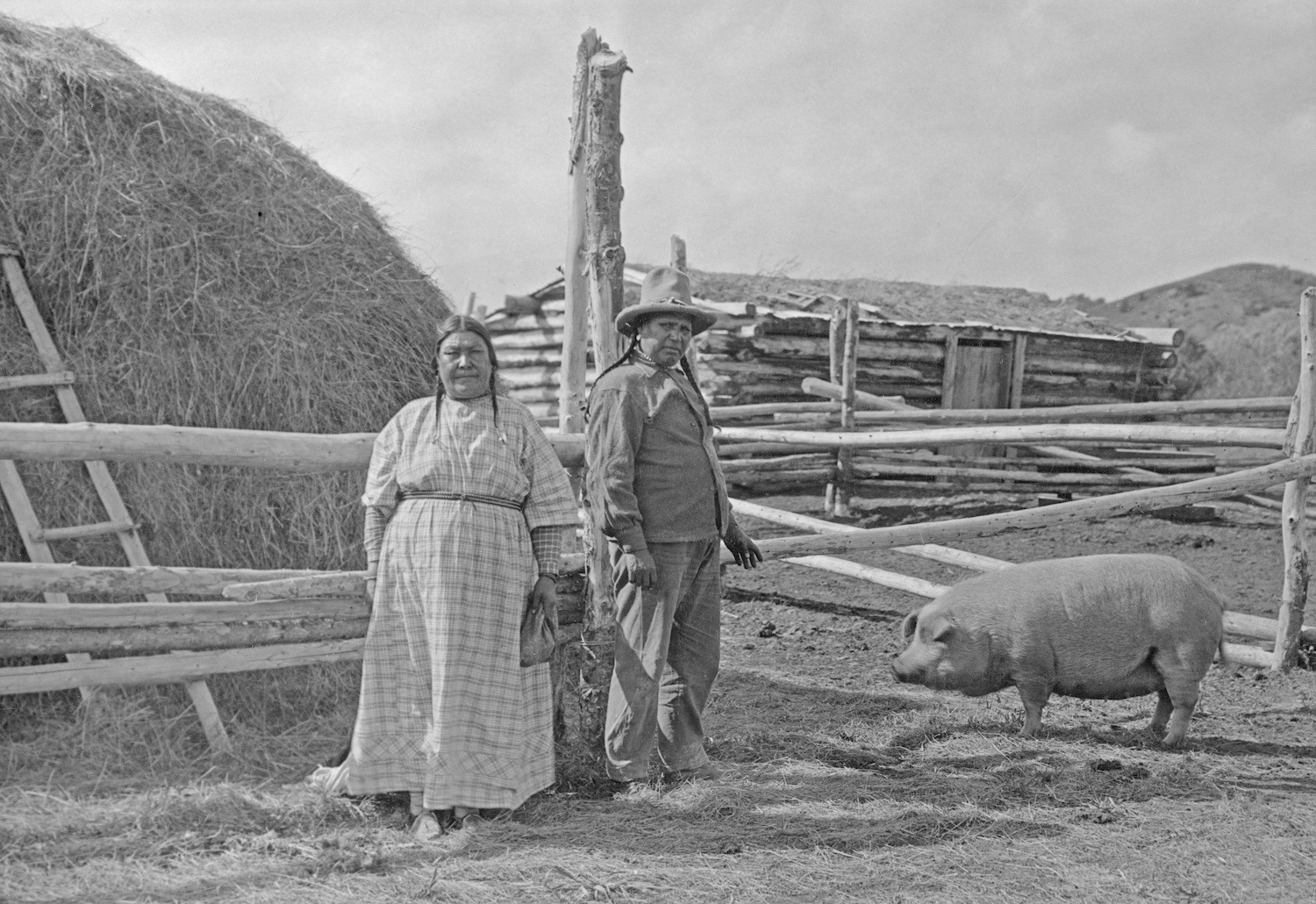
Before the European invasions, Indigenous communities practiced myriad versions of use-based agriculture. They organized farming not around individual family units and private land ownership, but around community stewardship. Blackfeet Chief Owen Heavy Breast and his wife are pictured in 1925 on their ranch on the Blackfeet Indian Reservation in northwestern Montana.
Keystone View Company/FPG/Archive Photos/Hulton Archive/Getty ImagesYet, frequent infusions of cheap land and labor have not been enough to make the small family farm model work. Lawmakers have not been deterred, and over the last century have provided tens of billions of dollars in direct government purchases, payments, and subsidized crop insurance, in addition to massive tax breaks. U.S. taxpayers have also made sizable investments in agricultural science, research and educating farmers, and infrastructure. From paying to pump irrigation water to engineering rivers to prevent flooding farmland to publicly-subsidizing conservation, most efforts primarily benefited private landholders. In short, the American public has provided small (overwhelmingly white) family farms with capital, workers, advanced knowledge, and protection from disasters for a century.
And what have we gained from such an investment? Today only about 2 million family farms remain in the country, and to support them, the federal government continues to spend about $20 billion annually.
Trolling through the historical record, it’s clear that the small family farm is less a viable business plan than a social pacifier.
Even today, between the abuse-plagued H2A agricultural worker program and the extensive carveouts for agriculture in labor laws, agriculture continues to employ some of the poorest and least protected workers in America.
No, really. Thomas Jefferson himself, the ultimate small family “yeoman” farm hype man, admitted in a letter to James Madison that encouraging small landholdings of 160 acres for landless whites would be a powerful tool for soothing socioeconomic tensions that might put giant plantations (like the two Jefferson himself inherited, encompassing 5,000 acres) at risk. In other words, small family farms were the “backbone of the nation” to Jefferson because they helped maintain the status quo—not because they were good at feeding people or fueling rural economies.
In plumbing the longer history of agriculture in North America, I came upon an unexpected, and exceedingly hopeful, phenomenon. Namely, a long history on this continent of organizing agriculture not around individual family units, private land ownership, and intergenerational wealth, but around community stewardship.
Before the European invasions, Indigenous communities across the Americas practiced myriad versions of use-based agriculture, often revolving around a commons system. These Indigenous farmers were (and remain) some of the world’s most advanced agriculturalists, and the plants they bred and cultivated dominate the world food system today, from corn to tomatoes to potatoes. In most known cases, these Indigenous groups controlled large areas of land collectively and allocated land for cultivation to individuals and families based on how much they needed and could manage well.
Trolling through the historical record, it’s clear that the small family farm is less a viable business plan than a social pacifier.
Since Europeans arrived, many groups have carried on the tradition of collective land ownership and management and used alternatives to the small independent family farm model to build community and fight oppression. From the efforts of Black farmers to the farm cooperatives built by Japanese Americans when their community fought to survive internment, right through important modern work being done on native lands or within organizations like The Abundant Table, a worker-managed farm in Southern California focused on paying its workers living wages, serving culturally relevant food, and pursuing land justice.
The conclusion I reached was that though small family farms were the recent past of the U.S. food system, they were likely not the future. Instead, people of color throughout North American history have proven that alternative farming systems are viable even when they’re not favored. Not only effective at serving the needs of a single family, they are capable of feeding whole communities, empowering workers, and caring for landscapes in a more holistic way. These farms operate under fundamentally different principles than the small family version. They are not measured by their rugged individualism and radical independence, but by how well they provide good food, good jobs, and good environmental outcomes.
What’s more, this kind of alternative model actually works to unwind the paradox that beginning farmers face in a way that no amount of conscious consumerism or impact investment has ever been able to. The team model acknowledges that there should be ways to get into farming that don’t require an individual or couple to wear every hat in the business, to acquire land at great personal risk and expense, or be forever at the mercy of a landlord.
People of color throughout North American history have proven that alternative farming systems are viable even when they’re not favored.
Instead, farming in these alternative models is acknowledged as an entrepreneurial venture. Young people who want to farm can instead be encouraged to build diverse leadership teams, identify market opportunities, and work with advisors and financiers to meet the needs of their customers as well as their partners and employees.
Outside of the farm sectors, these are not revolutionary ideas. But agricultural exceptionalism, or the idea that farms are fundamentally not like other businesses, have made them obscure in the American farm world.
We know this model, as opposed to the prevailing small family farm version, limits the financial risk to individuals interested in farming, offers more opportunity for people with unique skills to enter the space, and therefore creates tremendously more opportunity for people who did not win the “genetic” agricultural lottery. Plus, these farms, with their potential to grow without becoming fundamentally extractive of the people within or outside the organizations, actually have a chance to feed millions of Americans—something that small family farms have struggled for decades to do.
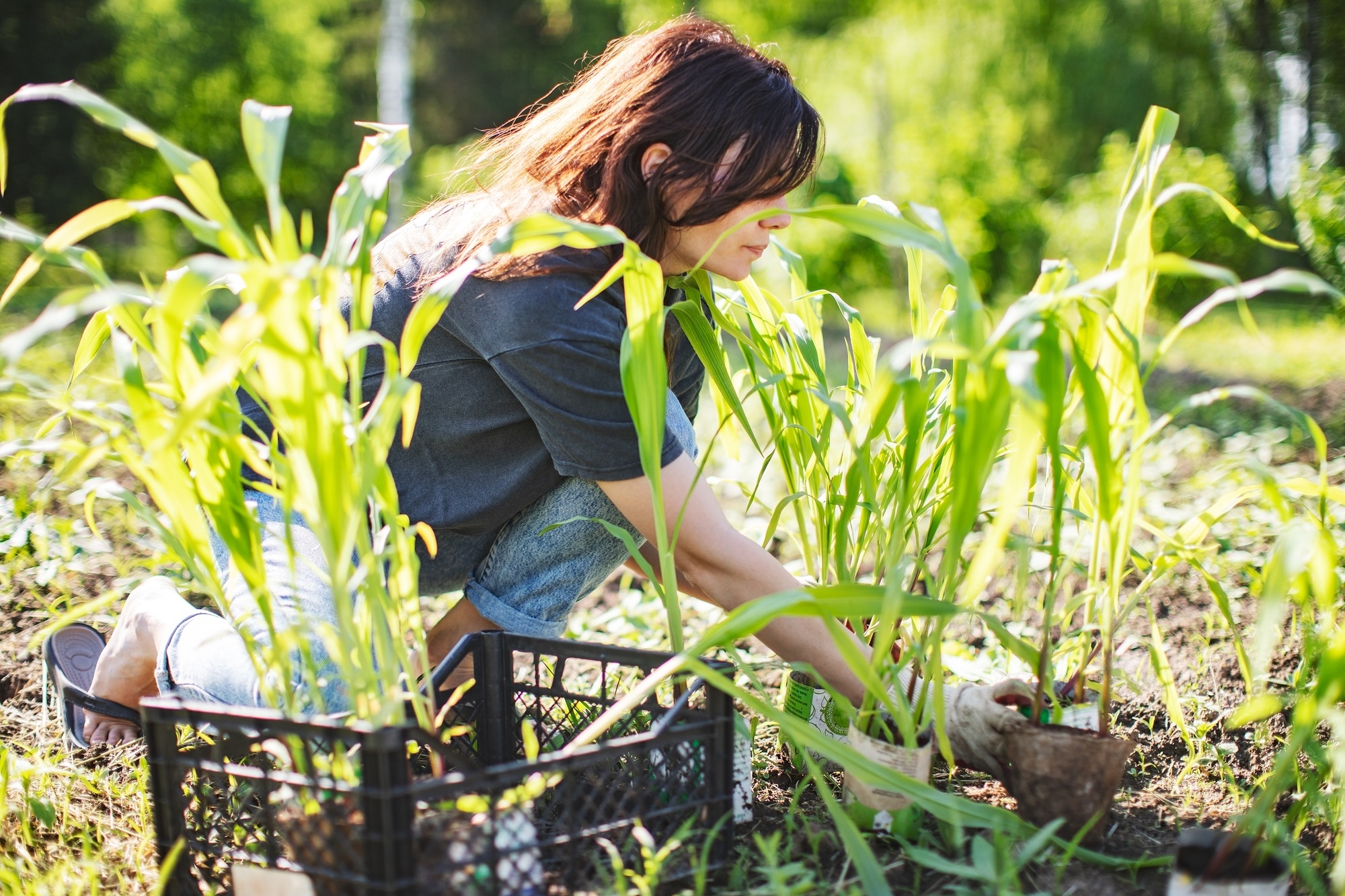
Mock argues that we must move beyond our attachment to the small family farm myth and open our minds to a bigger, more diverse, and less predictable future for farming.
Getty Images/iStock
What does all this mean for the future of American agriculture? That we should stop trying to build a more resilient and equitable food system on a foundation of an unproven (or disproven) small family farm ideal, especially when a very real set of alternatives is available. Before we can effect lasting change, we have to reckon with the reality of the farm system we have, one where success and security are predicated on wealth and privilege, not effort.
When we acknowledge that, we can stop promising beginning farmers that they can bootstrap their way to community- and climate-centric farm success, when we know hustlers who lack financial backing are doomed. When new farmers are eventually forced to walk away from agriculture, often deeply indebted, with little more than broken relationships and bodies, we can assure them that it was not a failure of their personal grit or virtue. Instead, it was an inevitable result of a system we refuse to describe as it is, rather than as we believe it ought to be.
When we see the image of a farm or farmer, we must be mindful of what’s being signaled and how the symbolism might be being used to shape our opinion, be it of a food item, a policy, or a news story.
One of the simplest contributions each of us can make to a truly attainable future farm system is to interrogate the agrarian bias that we carry. When we see the image of a farm or farmer, we must be mindful of what’s being signaled and how the symbolism might be being used to shape our opinion, be it of a food item, a policy, or a news story.
Moving beyond our attachment to the small family farm myth, and opening our minds to a bigger, more diverse, and less predictable future for farming is undeniably scary. But there’s a good chance it’ll make for a much more rewarding story than the never-ending rerun of the perpetually disappearing American farm.
